Estimated reading time: 11 minutes
Have you ever imagined how many positive impacts buying from China and selling on the Amazon platform will have on your business?
Today, everyone wants to sell his/her goods on Amazon. Are you considering this too?
In this guide, you will learn how to import and sell products sourced from China on Amazon.
Why Should I Buy from China and Sell on Amazon?

This article seeks to discuss the various benefits that companies around the globe can bring from Importing products from China.
It is quite important because Chinese manufacturing capabilities are of the highest standards which means that high-quality products can be produced at relatively cheap prices. Here are some key benefits:
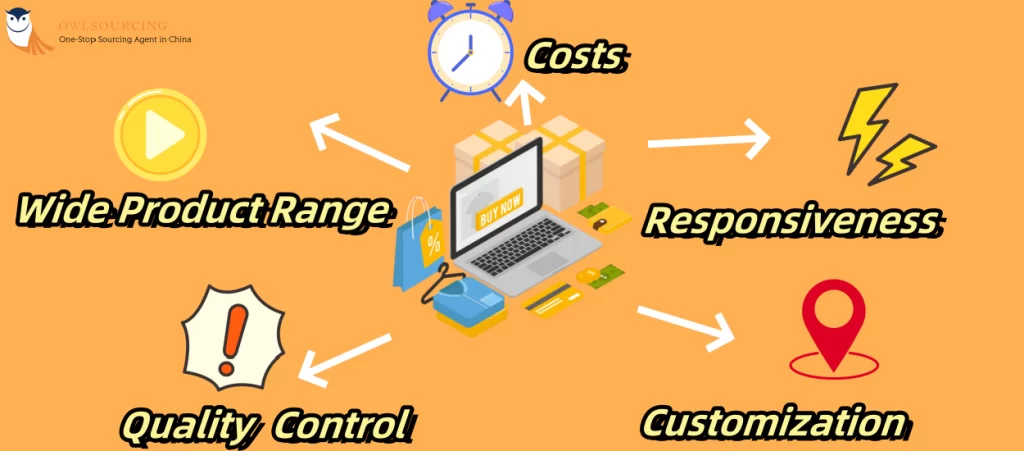
- Cost Efficiency: One of the most significant advantages Chinese manufacturers have over similar manufacturers in other countries is a better cost structure because of the significant scale and cheaper labor.
- Wide Product Range: Indeed, China today serves as a global center for various industries, offering a diverse range of products for many classification types.
- Quality Control: The Chinese suppliers’ misconception about many of the quality issues is partly true, having high-quality international standards and sophisticated quality control mechanisms.
- Customization Options: flexibility is always offered by Chinese manufacturers in an attempt to meet certain specified needs in terms of product or branding.
- Flexibility and Responsiveness: The Chinese manufacturer can shift resources and production processes quickly to meet any market and customer requirements. Fluency can be described as the capacity to change the scale of production to a great extent, which in turn helps to be more sensitive to the supply chain.
Why Choose to Sell on Amazon?
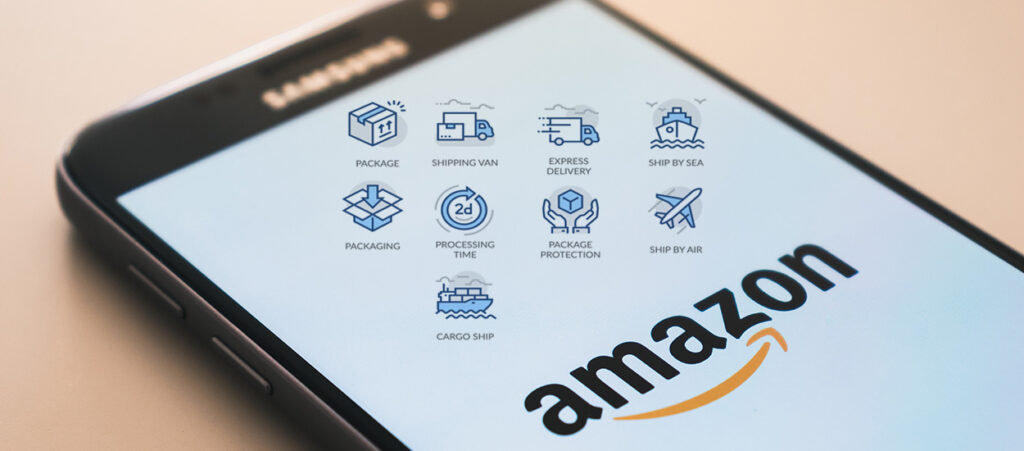
Amazon has transformed the shopping experience of consumers across the globe and is a giant platform for sellers to be on. Here are some reasons why selling on Amazon is a smart choice:
- Unmatched Reach: Given that millions of customers visit Amazon daily, your products can be exposed to a large market base.
- Fulfillment Services: Some of the benefits of Fulfillment by Amazon (FBA) are warehousing and storage, having third-party packaging and shipping services, and providing customer support if the need arises.
- Brand Credibility: Wanting and having your products to be initially recognized by customers is convenient when selling on Amazon because customers trust the online platform and will rather prefer to buy from well-established sellers on the site.
- Global Expansion: Another benefit of using Amazon is that it is a global store which means that you can take your business across borders with ease.
Owlsourcing provides professional sourcing and Amazon FBA services, helping you complete the entire process from sourcing in China to shipping to Amazon warehouses, ensuring the quality of your products and smooth transportation.
If you require information regarding more specific sourcing solutions in China or Hong Kong, please contact us.
Benefits of this Business Model for Entrepreneurs
Buying from China and selling on Amazon business model presents several enticing benefits for entrepreneurs:
- Low Initial Investment: Compared to establishing a conventional physical store, the process of creating an online business using this model can easily be done at a negligible cost.
- Flexible Operations: Thanks to mastery of technology that allows for remote working and management of business at any given time, you are free to plan your time and work from any part of the world.
- Scalability: Moreover, because of this structure, as your business grows vertically, the expansion can be addressed by either introducing new products or penetrating more markets without much fixed costs to overwhelm you.
- Diverse Product Range: It is an even bigger advantage when sourcing products from China since you get to look for all sorts of products that may be sold and bought in the markets that you supply to.
- Learning and Growth: The opportunity to work with international partners can be seen as beneficial at some point and contribute to individual and business development.
- Networking and Relationships: Developing friendships with suppliers helps to establish long-term business and expand business-related prospects in China.
How to Buy from China and Sell on Amazon?
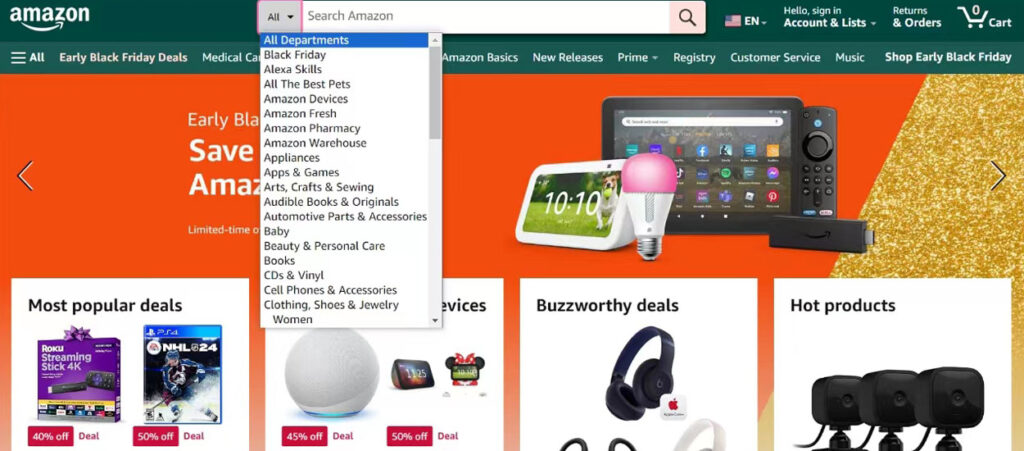
Step 1: Research and Analyze the Amazon Product Market
Before starting your business, analyze the products you need first. Of course, the current best method is to find top-selling products through Amazon. Utilizing these selling products can bring you high profits.
We have provided some suggestions for your reference:
- Use tools like Google Trends, Amazon’s Best Sellers, and other market analytics tools to identify trends and popular products.
- Look at similar products on Amazon, noting their pricing, customer reviews, and rankings. This helps in understanding what works and what doesn’t.
- Choose products that have a good balance of demand and competition. Avoid oversaturated markets.
Step 2: Finding Reliable Suppliers in China

There are many ways to find a manufacturer in China. Listed below are the methods we have listed to find them through the following approaches.
- Online Marketplaces: Some of the Chinese B2B wholesale websites that can be used to obtain suppliers are Alibaba, and alternative Chinese wholesale platforms such as DHgate, Made-in-China, and Global Sources. They should offer verified suppliers.
- Trade Shows: Some of the most effective methods of identifying suppliers are a firsthand encounter through trade shows. For instance, the Canton Fair is probably the largest in China aimed at foreign purchasers.
- China sourcing agent: A China sourcing agent is required if you need to find a manufacturer but sometimes you are not sure how you can achieve this while being sure that you will find the right one. They will assist you in sourcing from manufacturers in China and will provide you with more comprehensive services.
After finding a Chinese manufacturer you can cooperate with, don’t forget to contact Chinese manufacturers. Establishing a good communication relationship with them is helpful for your next purchase.
Step 3: Negotiating with Chinese Manufacturers

For it make sure to discuss topics like pricing, MOQs, payment terms, and delivery times that you are willing to accept. However, before negotiating with them, please pay attention to the following elements:
- Understand the Cultural Context: For instance, assertiveness as in confrontation or intimidating approach to negotiation can be considered improper. Hospitality is key when it comes to negotiations, therefore it is good to be polite, patient, and respectful all through the process.
- Clear Communication: Stay clear on your needs, expectations, and the quality that you are willing to settle for. Minimize the use of ambiguity because it results in the misunderstanding of one or several parties. If for some reason the two of you cannot understand each other, then it would be best to hire an independent interpreter.
- Decision-Making Process: Note that Chinese companies’ decision-making process can involve a lot of people and therefore move up the hierarchical structure slowly. Patience is key.
- Contractual Agreements: After an agreement has been made a legal contract must be written to cover failed details of the agreement. However, remarkable differences in Chinese business culture dictate that a contract is not obligatory a finished document that cannot be changed in the future.
- Seek Local Advice: Maybe it is worth turning to a person who has experience in the Chinese market. They can offer helpful information about current trends within the business sphere, as well as about the approaches to negotiations in a particular country.
I recommend checking out my article on Negotiating with Chinese Suppliers for deeper insights into effective negotiation strategies when working with suppliers & Manufacturers in China.
Step 4: Buying Product Samples from Chinese Suppliers

Before committing to a large order, it’s recommended to buy product samples from China. This allows you to assess the quality, functionality, and overall satisfaction of the products you intend to sell.
Here’s a guide on how to go about buying product samples from Chinese suppliers:
- Identify Potential Suppliers
- Request Detailed Information
- Negotiate Sample Terms
- Evaluate Samples Thoroughly
- Provide Feedback
- Discuss Customization and MOQs
- Plan for Logistics
- Build a Relationship
Note: Remember, do not overlook the relationship with these Chinese suppliers.
Step 5: Choosing the Right Shipping Method

Selecting the correct mode of shipping is very important to have timely deliveries at the least cost possible. Decide on the mode of transport for the shipment; air freight, sea freight, or express delivery services concerning the size of shipment, time, and cost.
| Sea Freight VS Air Freight VS Express Delivery | Sea Freight | Air Freight | Express Delivery |
| Speed | Slowest | Fast | Fastest (3-5 days) |
| Cost | Lowest | Higher than sea freight | Highest |
| Suitability for Large Volumes | Best suited for large volumes | Suited for smaller volumes | Not suited for large volumes |
| Reliability | High (subject to weather conditions) | High | Very High |
| Geographic Reach | Extensive (major global ports) | Extensive (major airports) | Extensive (global coverage) |
| Customs and Clearance | Complex, often requires a customs broker | Simpler than the sea, but still requires clearance | Mostly handled by the courier service |
| Environmental Impact | Moderate (lower than air freight) | High | High |
Ensure Your Amazon Products Meet Standards
These steps will lead you with confidence through sourcing, compliance, and selling on Amazon.
- Outsource a Quality Control Specialist: Partner with an experienced quality control company to ensure your products meet Amazon’s rigorous standards and protect your brand reputation.
- Use a Request for Quotation: An RFQ will make the process of communicating with suppliers easier. State your requirements clearly to find reliable partners that meet your needs.
- Complete Amazon’s Verification Process: Go through Amazon’s verification process and provide the necessary identity to set up your account and gain the trust of the platform.
- Address Legal and Brand Considerations: Keep yourself compliant by checking brand agreements, intellectual property rights, and regional laws.
How to Set up your Amazon Seller Account?
Setting up an Amazon seller account is relatively straightforward:
- Visit sellercentral.amazon.com and create an account.
- Choose between an Individual or Professional selling plan.
- The detailed registration procedures must be accomplished here such as identification check and input of the bank account details.
First of all, let me explain to you that to start selling things on Amazon, you need to create an account on Amazon as a seller. Allow me to take you through the principal steps to achieving this goal.
Select the Correct Business Strategy
The designation of the main business model is the primary and most important decision when creating a seller account. The right model depends on the type of product; the size of your stock; and, your business objectives in general.
Amazon offers several business models to choose from:
Private Label: Most suitable for people who intend to market products with their logos or who wish to repurpose products they have sourced from manufacturers. There is great brand visibility here and the manufacturer enjoys a tight rein of the product quality. For more details, please refer to “How to Find Chinese Private Label Manufacturers for Amazon FBA.“
Online/Retail Arbitrage: This means getting some products at a cheaper price from physical stores and then selling them at a higher price at Amazon. It can be a sure way of converting popular products into profits; however, it means a constant supply of products from the offline market.
Wholesale: Merchants purchase large quantities of products cheaply and make individual sales on the online marketplace, Amazon in this case. Ideally advisable for people who wish to trade in bulk, however, there is an inherent risk in carrying stock, especially if the products do not move off the shelves.
Dropshipping: A model in which the actual stock of products is not being stored by the sellers and orders are being directly met from third-party warehouses. On Amazon, you merely promote the products, and whenever a client orders them, the supplier delivers them to them. This model has less initial costs but can be very risky if the product quality does not match or delivery of products is slow.
Handmade: According to this model, independent sellers with unique hand-crafted items are well positioned. Self-employed artists can use it to display their products and make sales. As this can develop a strong market, at the same time, time consumed in making a product and expansion of it may act as disadvantages.
Improved Visibility and Sales on Amazon
Optimizing your product listings is essential for increasing visibility and driving sales on Amazon:
- Conduct keyword research to identify relevant search terms customers use when looking for similar products.
- Craft compelling product titles, bullet points, and descriptions that incorporate these keywords while highlighting unique selling points.
- Always use highly polished images of products and services that represent the company’s products and services.
- Encourage positive customer reviews through exceptional customer service and follow-up communication.
Now that your seller account is created let’s examine the different ways you can finish up your products on Amazon.
Fulfillment Options: What are FBA and FBM?
Fulfillment by Amazon (FBA) and Fulfillment by Merchant (FBM) are the two primary fulfillment methods offered by Amazon.
- Fulfillment by Amazon (FBA): Basically, FBA is a method through which Amazon is responsible for the storage of inventory and packing of merchandise, shipping, and customer relations.
- Fulfillment by Merchant (FBM): With FBM, you should handle the entire fulfillment process, including storing inventory and shipping orders directly to customers.
How to Choose Between FBA and FBM?
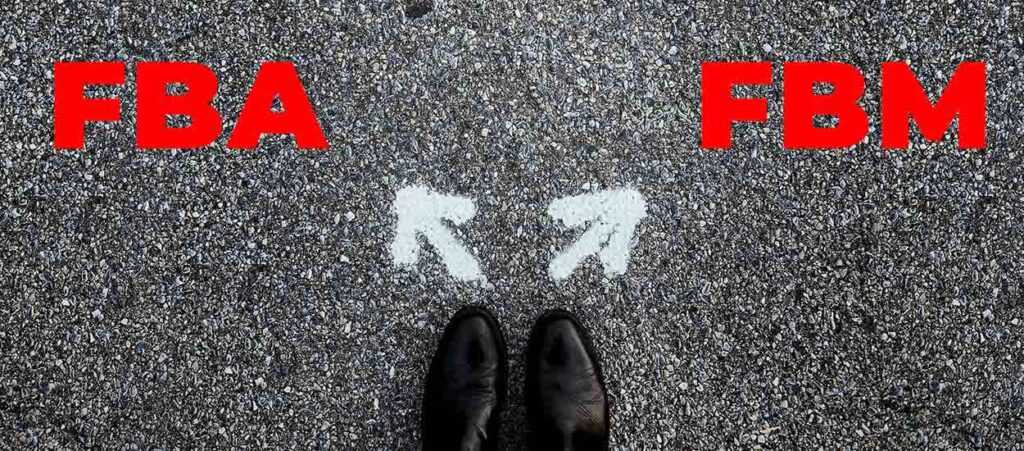
The choice between FBA and FBM depends on various factors such as product size, sales volume, cost considerations, and personal preferences. Consider the following when making your decision:
- Evaluate the fee structure for both options.
- Assess your capacity to manage inventory and fulfill orders independently.
- Analyze the potential impact of Amazon Prime eligibility on sales.
| FBA VS FBM | FBA (Fulfillment by Amazon) | FBM (Fulfillment by Merchant) |
| Fulfillment Process | Handled by Amazon | Handled by the seller or a third-party logistics provider |
| Storage and Shipping | Stored in Amazon’s warehouses; Amazon handles packing and shipping | Stored at the seller’s location or a third-party warehouse; the Seller handles packing and shipping |
| Customer Service and Returns | Managed by Amazon, including customer service and returns | Managed by the seller, including customer service and returns |
| Control Over Inventory | Limited control, as inventory is stored at Amazon’s warehouses | Full control over inventory management |
| Shipping Costs | Fees for storage and fulfillment by Amazon | The seller is responsible for all shipping costs |
| Complexity | Simpler in terms of logistics, but requires an understanding of Amazon’s system | More complex in terms of logistics, but offers more control |
Compliance & Certification Requirements for Amazon
Ensuring products meet compliance standards can prevent costly delays:
- Product Certifications: The CE, RoHS, and FDA certifications are important depending on this product category.
- Customs & Import Regulations: Become aware of procedures, such as customs, invoices, packing lists, and certificates of origin.
Marketing and Promotion on Amazon

How can you enhance visibility and boost sales on Amazon? To enhance visibility and increase sales on Amazon, consider employing the following strategies:
- Utilize sponsored product ads to target relevant keywords and increase product visibility.
- Optimize your product listings with compelling images, informative bullet points, and persuasive descriptions.
- Encourage customer reviews through follow-up emails or inserts in product packaging.
- Engage with customers through excellent customer service to build positive brand associations.
Strategies for Building a Brand Presence
Building a brand presence is crucial for long-term success on Amazon:
- Develop a unique brand identity through effective branding elements such as logos, packaging design, or branded inserts.
- Leverage social media platforms to engage with customers outside of the Amazon marketplace.
- Implement email marketing campaigns to nurture relationships with existing customers while attracting new ones.
Creating an Amazon Seller Account
If you have decided to begin selling on Amazon the next step is creating a seller account.
Below, I dedicate guidelines for making an Amazon Seller Account for you to follow, which gives a checklist that will help you enroll as an Amazon seller and prepare all you need to import products from China.
1. Visit the Amazon Sign-Up Page
The first measure to take when wanting to create an Amazon seller account is to visit the Amazon Seller Central page. Simply go there and click on the “Learn more” button to be taken through the account creation process once more.
In the “Pricing” section, you will find the comparisons of the selling plans to decide which model fits your business.
2. Choose Between an Individual or Professional Selling Plan
An individual or professional selling plan is another decision you will be required to make when using this platform.
- Individual Plan: Select this plan if you start from a small scale and are aiming at selling less than 40 products monthly. The Individual plan costs per sale; thus, it is affordable to newbies, and it is an excellent plan for a startup business.
- Professional Plan: Choose the Professional plan if you’re going to sell over 40 items per month or need additional features. However, gaining full access requires additional costs of a monthly subscription fee, but it allows users other perks like the bulk list and Amazon advertising.
3. Select “Create a New Account”
When choosing the selling plan, click on the “Create A New Account” button. Here, you will be asked to enter your email and set a password that will be safe to use.
Amazon will send a verification email to the account associated with a phone number. To go through the registration, first, open the received email and confirm your address.
4. Please, Kindly Fill Your Business Details
Next, you’ll be asked to provide your business location and business type:
- Business location: This is where your business is registered Your NYC business will be registered here.
- Business type: Select one from options such as state business, private business, public business, charitable organization, or a person. If you are a sole trader, individual should click on the button “None, I am an individual.”
Type in your name in full then click on the button “I agree and wish to continue”.
5. Add Your Personal Information
Amazon will now prompt you to enter your personal details such as:
- Full legal name
Address (this is the address Amazon will use to send a postcard with the verification number) - Phone number and passport number
It is imperative to fill it in correctly for Amazon as it does check customers’ identity using this data.
6. Provide Billing Information
This part requires inputting your billing information and such details as your credit card number.
As for fees, Amazon may need to hold your credit card, and, of course, they do ask for the credit card data to check if the seller is really who they claim they are. Fill in your bank account information and press “Next”.
7. Supply Product Information
After verification of your billing information, you would be asked about product information such as the name of your store at Amazon, UPCs, and whether you have the rights over the brand that is going to be sold. Once this information is entered click on “Next”.
8. Verify Your Identity
Thus, identity verification will become even more needed on Amazon. Scan/provide your identification documents; bank statement and pictures of the passport/ID card.
You will receive a postcard in your business address with the verification code from Amazon. After that finalize the process on the verification page by entering the code you get once you register.
But once you’ve signed up for an account, and completed all the necessary steps within it, you’re ready to begin selling.
How to Send Products to Amazon FBA Warehouses
The next logical step after buying products in China is to ship them to Amazon’s fulfillment centers. Here’s how to do it:
1. Prepare a Shipping Plan
Ensure that your products at Amazon comply with the company’s standards. Design a shipping schedule that states the number of units, UPC Codes, weight, dimensions, and who will package the items (you or the supplier).
- Units per case: Must contain no more than 150 pieces per case and note “Team Lift” if a box weighs more than fifty pounds.
- UPC Codes: It is mandatory for the new products that the company wants to launch on Amazon.
2. Create Shipping Labels
Open your Amazon Seller Central account go to the “Inventory” tab and click on it. Navigate your dropshipping store and pick the products you want to send or replenish.
Write your supplier’s address if you order products directly from China and design the labels for shipment.
All boxes should descriptively state the weight and dimensions of the products along with the corresponding box number.
3. The Inventory Placement Service needed on Amazon
Amazon’s inventory placement service permits you to stock your products at one of the committed fulfillment centers not at any of the different centers one by one.
Products will be redistributed by the company as required by the market pending another tender offer.
It is cheaper for big consignments than other modes of transport, and there are no risks of conveying wrong consignments. Amazon charges $0.30 for all those standard-size items and $1.30 for all the oversized items.
After getting registered for an Amazon seller account and knowing how products reach Amazon FBA, you are all set to import Chinese products and start selling on Amazon!
It is also important to ensure that distance is not breached with Amazon’s rules of conduct to avoid mayhem on business operations.
Read More:
- Source Products from Yiwu to Sell on Amazon
- Buy from China and Sell on Amazon
- Amazon FBA Sourcing Agent in China: Ultimate Guide
- Best-Selling Amazon Products You Can Import From China
Final Thoughts
Buying from China and selling on Amazon is a great opportunity for your business, but there are still many considerations in this process. Of course, you can contact us at Owlsourcing—a professional Chinese procurement agency.
We will help you solve any problems you encounter during the procurement process or when you are about to start.
If you have any questions and would like to consult, please email us at [email protected], and we will provide you with answers.

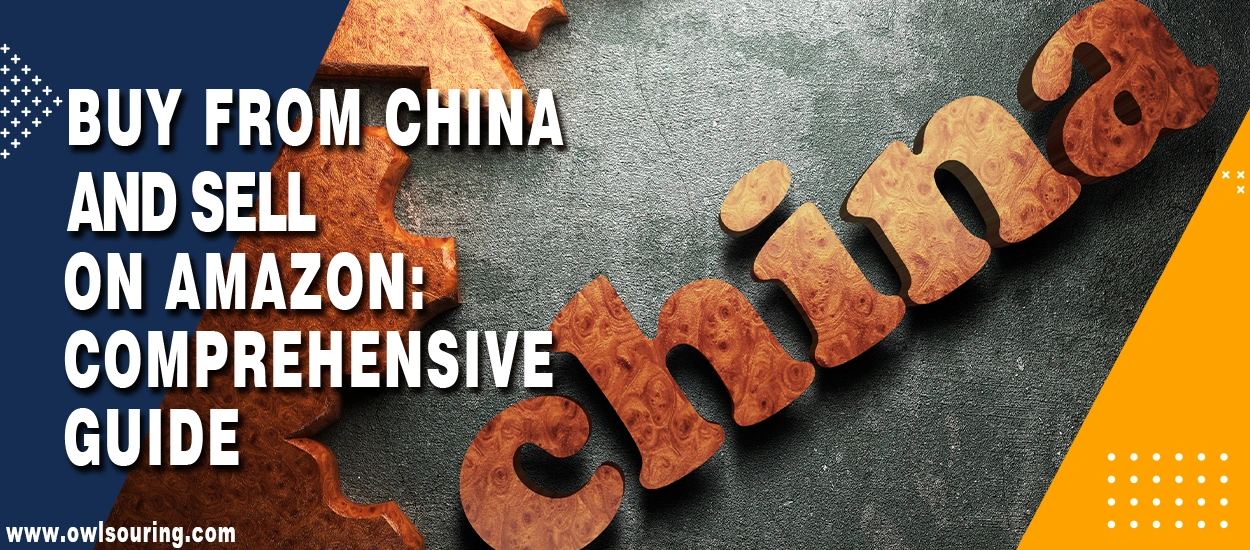

2 thoughts on “Buy from China and Sell on Amazon: Comprehensive Guide”
What are the potential legal risks involved in importing products from China and rebranding them with my own logo for resale, and how can I ensure that I am not infringing on any intellectual property rights or violating any import regulations?
Hello Lois,
The potential legal risks include infringing on intellectual property rights, violating trademark laws, and not complying with import regulations.
To mitigate these risks, conduct thorough research on intellectual property laws, ensure compliance with both Chinese and your country’s import regulations, and seek legal advice before proceeding.